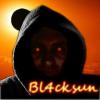
Posted
As it often takes quite long to import phrases from a MIDI file, it would make sense to let synfire import multiple MIDI files at once, e.g a whole folder, optionally including subfolders.
The standard import settings should then be used for each file.
E.g import a whole folder of Beethoven sonatas.
You could then, early in the morning, start the import, go to work, and coming home in the evening you got thousands of new phrases.
Sat, 2015-01-17 - 11:20 Permalink
This option is available if you are importing to a library, not sure if that would help? There is (at least in the pro version) a checkbox on the right hand side (after you have selected a file) to import all files in a folder. Other options lets you combine all those imported tracks into a single folder in the library or even merge all the tracks into one.
Wed, 2015-03-04 - 12:50 Permalink
synfire pro is really a gem software ....i am using the demo version ....but decided to buy the pro version ....
will it possible to extract all the phrases from a midi file autometicaly , after importing the midi file in synfire ....? if yes please tell me the way .....
thanks
saugata
Wed, 2015-03-04 - 22:39 Permalink
if you import to a library, the import process automatically breaks the 'tracks' into musical phrases. If you import to an arrangement you end up with a complete song. Although it is not a perfect match to the original, synfire tries to 'guess the underlying musicallity and present it in a way that can be reused to create something original'.
It is possible to import as static which (providing your instrument ranges are set) does match the original notes and is very quick. You can then export your own snippets to a library or otherwise process the song.
Mon, 2015-04-13 - 13:57 Permalink
This option is available if you are importing to a library, not sure if that would help? There is (at least in the pro version) a checkbox on the right hand side (after you have selected a file) to import all files in a folder. Other options lets you combine all those imported tracks into a single folder in the library or even merge all the tracks into one.
Is this feature available for SYnfire Express? I can't find it.....
Fri, 2017-07-14 - 21:27 Permalink
batch import works from the standalone library editor only, not the one embedded with the arrange window. after file/import/standard midi file, select the first file to import and tick the box "import all files in folder". that will do the batch import.
Tue, 2017-07-25 - 20:49 Permalink
I'm finding this procdure a bit problematic.
Some of the results are quite acceptable. Others sound horrible...way to high or low, or perhaps just a very low bass note thumping repeatedly. Some won't sound at all. And the choice of instrument playing can change from one file to the next.
The files I imported were all piano MIDI, some more chordal, some more melodic. I chose Auto-Detect for the Figure Recognition Preset.
Tue, 2017-07-25 - 23:07 Permalink
Batch import is really only useful for a large number of small files with simple content, e.g. drum patterns, bass runs, brass stabs, etc.
If you have full songs or classical pieces you want to harvest for phrases, you'll need to manually select unique and interesting regions anyway. So why bother with hours long batches, if you can import as static pitches in a second and grab the phrases with Command-E ?
(http://users.cognitone.com/tutorial/import)
It's way easier to fix recognition errors with small phrases, than with 5 minute tracks.
Wed, 2017-07-26 - 00:13 Permalink
The files I was importing are 4-bar piano phrases. The results were maybe 40% acceptable.
Also, you seem to be giving conflicting signals regarding importing as static phrases. In your above reply you recommend the method. But in the article you linked to you seem to discourage it.
Could you clear up this discrepancy for me?
Thank you.
I love the obvious potential of this software, but walked away from it for about a year because of the difficulty in initial setup. And sometimes I think you're the only one on the whole planet who actually knows how to use it. But I'll keep plugging away, and I do appreciate your help.
Wed, 2017-07-26 - 01:08 Permalink
I'm making a bit of progress, but I've given up on the batch import, and on importing as static pitches. It just doesn't make sense to me to do the latter and then have to "figure" out the harmony later. So I've imported a SMF and have got a good representation of the orginal file now in Synfire as a collection of figures.
I understand that I can select a span of the staff and press Ctrl-E to extract a phrase to the embedded library. But I want to copy those phrases to an already-existing library. How can I do that?
Thanks.
Wed, 2017-07-26 - 01:13 Permalink
OK, copy and paste. For some reason that wasn't working the first time I tried it...probably pilot error.
But the figure I pasted into the existing library is in the wrong position on the staff. The first "notes" are before the start time, so they don't sound.
Wed, 2017-07-26 - 10:31 Permalink
you seem to be giving conflicting signals regarding importing as static phrases
While we recommend importing static pitches as a first step, that doesn't imply you should keep them static. It's just easier to open and skim a file for interesting phrases more quickly. Once you collected your static "clips" into a library, you can still run figure recognition on them in the library editor. This is more focussed, faster and allows for immediate optimization of the results.
Make sure harmony is analyzed also with static import (default setting). Synfire benefits from looking into all tracks for the harmonization. At a later stage with only small "clips" at hand, the context of the other tracks is lost, leading to less useful results.
Yes, phrase segments can reach into negative time (left of zero). A figure segment's position actually is that of its anchor symbol. So in theory, a phrase could have a segment reach as long as one measure left of its beginning. This is a unique feature that results in a very natural blending of phrases at container bounds.
Fri, 2017-07-28 - 20:36 Permalink
Holy hell, thank you! I was doing one by one for a bunch of midi loops. I didn't know that you could import all the files in a directory and make a folder. This is fantastic. I'm learning more and more features on this great software.








